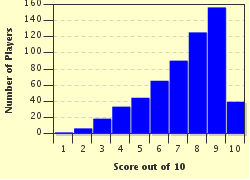Quiz Answer Key and Fun Facts
1. Historians and the romantically minded have argued back and forth for very many years over whether which English leader of a band of merry men actually existed or not. Who is this controversial figure?
2. Another legendary hero, whose very existence is also under question, is the champion archer, William Tell. With which country is this heroic figure associated?
3. The fictional character of Zorro was based on a famous Mexican person known as the 'Mexican Robin Hood'. What is that person's name?
4. This American man continues to fascinate people long after his death. Criminal, murderer, bootlegger - you name it, he did it. Yet he had a surprisingly different side to his character as well. Who was "Scarface"?
5. This Australian bushranger who lived from circa 1854 until 1880 is another controversial figure who is either seen as a murderer and thief, or a gallant folk hero. Famous for his suit of home made armour, who was he?
6. This German woman, who lived from 1098 until 1179, is fascinating. At a time in history when women were only ever supposed to be obedient wives, dutiful mothers, or religious sisters, she was a writer, philosopher, mystic, composer, medical expert, abbess and polymath. Who was she?
7. Which inspirational French figure, whose death was in 1431, was retrialled twenty-five years following his or her execution and declared innocent?
8. Which man, considered a hero in Russia, betrayed Britain while working for Russia as a double agent?
9. The Italian Giorgio Perlasca posed as the Spanish consul-general based in Hungary during the Second World War. During that time what did he manage to achieve?
10. What did the great Hawaiian King, Kamehameha I, accomplish that nobody else had been able to achieve?
Source: Author
Creedy
This quiz was reviewed by FunTrivia editor
bloomsby before going online.
Any errors found in FunTrivia content are routinely corrected through our feedback system.

